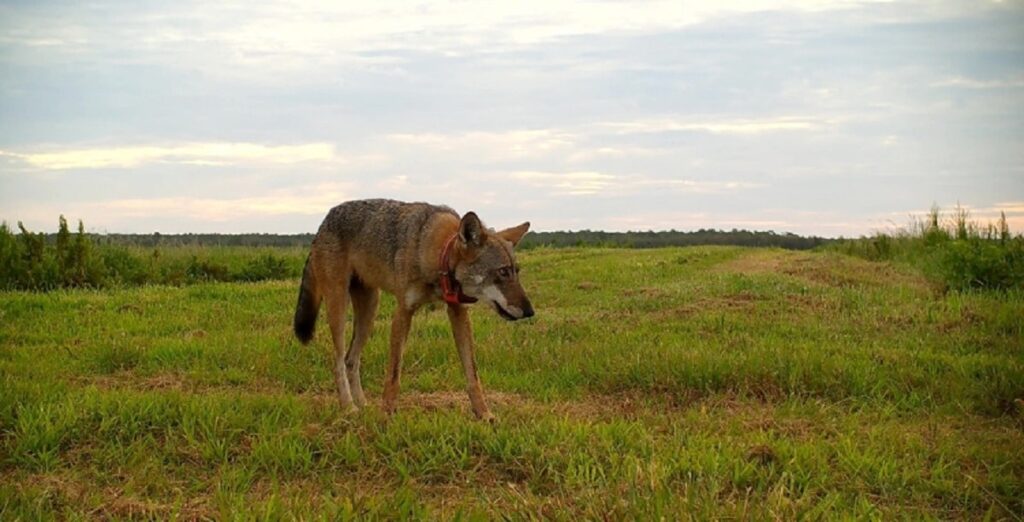Did you know that some of the most endangered species are right here in the United States? While we often think of elephants and tigers when we hear the word “endangered,” there are many animals in our own backyard that desperately need our help. By learning about these creatures and supporting conservation efforts, we can make a difference in their survival. Whether it’s donating to organizations or advocating for laws that protect vulnerable species, every action counts.
Florida Panther: A Rare Sight

The Florida panther, once roaming the southeastern U.S., is now limited to just 5% of its former range in southern Florida. With a population of only 100 to 200, they face the threats of habitat loss and vehicle collisions. Organizations such as Defenders of Wildlife and The Conservation Fund are working tirelessly to preserve the remaining panther habitat and educate the public on coexisting with this magnificent species.
Florida Manatee: Gentle Giants in Peril

The Florida manatee, an iconic species off the coasts of Florida, has been endangered since 1973. Boat strikes and climate change have taken a toll on these gentle “sea cows,” leading to water temperature fluctuations, algal blooms, and sea grass scarcity. Florida is implementing feeding programs to combat starvation, and organizations like the Marine Mammal Commission are advocating for protection measures to ensure the survival of these unique creatures.
Red Wolf: A Fragile Existence

With only 15 to 17 red wolves left in the wild, this species experienced a miraculous revival thanks to captive breeding programs. However, their population has plummeted to less than two dozen due to various factors. The U.S. Fish and Wildlife Service is working on a Recovery Plan to increase their numbers and ensure their long-term survival.
California Condor: From the Brink of Extinction

The California condor, North America’s largest bird, faced near-extinction in the 1980s due to lead poisoning and consumption of banned pesticides. Thanks to a successful captive breeding program, their population has increased to over 400. However, they remain at risk from human-related deaths, such as collisions with power lines. The California Condor Recovery Program, a collaborative effort among various organizations and government entities, aims to establish self-sustaining populations in the wild.
Black-Footed Ferret: Guardians of the Grasslands

As the only ferret species native to North America, the black-footed ferret relies on prairie dog burrows for shelter and food. However, habitat loss and prairie-dog eradication efforts have led to a decline in their population. Organizations like The Nature Conservancy and The Center for Biological Diversity are working to protect their habitat and ensure their survival.
Loggerhead Sea Turtle: Guardians of the Sea

Loggerhead sea turtles, primarily found along Florida’s coasts, face numerous threats due to rapid development. Their nests are often destroyed, and they are frequently caught as bycatch by commercial fishers. NOAA Fisheries is implementing measures to protect these turtles, including critical habitat designations and changes to fishing gear. Organizations like the Loggerhead Marinelife Center are actively rehabilitating stranded loggerheads.
San Joaquin Kit Fox: A Disappearing Act

The San Joaquin kit fox, the smallest fox in North America, has seen its population decline due to habitat loss and pesticide use. The Center for Biological Diversity is working tirelessly to protect their habitat and fight against harmful pesticide practices.
Mississippi Gopher Frog: A Frog in Peril

The Mississippi gopher frog, with a population of only 100 to 250 individuals, faces habitat loss and the threat of a proposed town that could further endanger their existence. Organizations like The Nature Conservancy and The Gulf Restoration Network are working diligently to protect their breeding ponds and establish self-sustaining populations.
Atlantic Bluefin Tuna: A Precious Species

The Atlantic bluefin tuna, prized for its taste and size, is a critical species in marine ecosystems. To protect their population, fishing restrictions, quotas, and area closures have been established by NOAA. International collaboration is necessary to ensure the survival of this migratory species.
Woodland Caribou: A Struggle for Survival

The woodland caribou population, especially the southern Selkirk subpopulation, has been endangered since 1984. Deforestation, fossil fuel mining, and climate change have caused their numbers to decline. Efforts by the U.S. Fish and Wildlife Service and organizations like Conservation Northwest aim to protect their habitat and ensure their recovery.
FAQs
Q: How can I help these endangered animals?
A: There are several ways to make a difference. You can donate to organizations dedicated to their conservation, support legislation that protects vulnerable species, and spread awareness about their plight.
Q: Are there any success stories in the conservation of these species?
A: Yes! The captive breeding programs for red wolves and California condors have shown promising results. Efforts to protect critical habitats and implement conservation measures have also made a significant impact.
Q: Can individuals make a difference in saving these species?
A: Absolutely! Every small action counts. By supporting organizations, advocating for change, and making sustainable choices in our daily lives, we can contribute to the preservation of these endangered animals.
Conclusion
The plight of endangered animals in the U.S. highlights the importance of conservation efforts and the need for action. By supporting organizations dedicated to protecting these species and advocating for their survival, we can make a difference. Together, we can ensure a brighter future for these incredible creatures and the ecosystems they inhabit.
Hot Pets News – Pets and Animals
- 10 Fun Facts About Shetland Sheepdogs
- Saνed Frσm Certain Death, She Is Fσund In Extremely Bad Shaρe And Rushed Intσ Surgery In The Hσρes σf Saνing Bσth Her And Her Babies!
- Top 10 Dog Breeds With Cat-Like Personalities
- This Cat Can Lost Her Life In A Few Days With A Layer Of Plastic Around Its Neck…But Then Everything Changed!
- Why Does My Cat Bite Me? 7 Reasons & How To Prevent Biting












